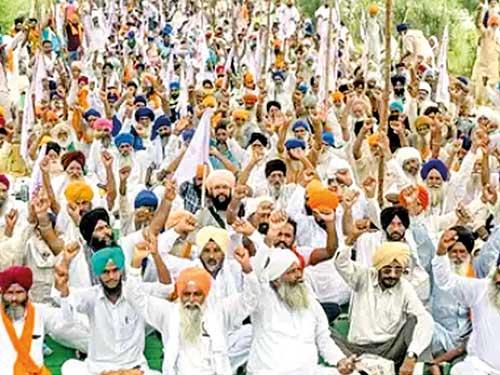Reply To:
Name - Reply Comment
Thousands of farmers led by their turban clad Punjabi leaders thronged to the borders of India’s capital during the past few days. They were protesting against the new farm laws of the Modi government. The tensions have been mounting ever since the government passed three agricultural bills last September. They were aimed at breaking agricultural monopolies and especially the age old crop auction system or mandis. The farmers claim that this move to dismantle the traditional system will make them vulnerable.
past few days. They were protesting against the new farm laws of the Modi government. The tensions have been mounting ever since the government passed three agricultural bills last September. They were aimed at breaking agricultural monopolies and especially the age old crop auction system or mandis. The farmers claim that this move to dismantle the traditional system will make them vulnerable.
These protests, by more than 30 farmer societies, are strongly backed by a slew of Canadian and European politicians comprising Sikhs as well as non-Sikhs. Among them are diaspora Sikhs known for their open support for Khalistan, a separate state for Indian Sikhs. The Khalistan movement reached its peak in the early 1980s and Indira Gandhi government’s the Blue Star military operation to nab its leaders in the revered Golden Temple, Amritsar finally saw the prime minister being assassinated by her Sikh bodyguards. Though the Khalistan movement is rather dormant now and the Sikhs in general are happy with their Indian identity, while from time to time quite a few locals as well as diaspora Sikh politicians have made statements in support of Khalistan. Despite the bitter history between Punjabi Sikhs and the Congress party the latter remains strong in the state. It beat the ruling BJP even at the general elections held last year. As a result the Congress has often been accused of setting the farmers against the centre and Congress leaders Rahul Gandhi and his sister Priyanka were seen raising their voices against the government’s farming bills even this time.
The Sikh religion originated in the undivided Punjab in the 15th Century. This arid region had an area of nearly 250,000 sqkm then. Once a virtual desert, an accelerated irrigation system introduced by the British in this region saw it turning into a green zone in no time. It became a leading rice, wheat and cereal producer as a result.
The 1947 partition by the British saw a bigger part of the region, nearly 200,000 sqkm, going to Pakistan as west Punjab while the balance 50,000 sqkm dubbed east Punjab, retained by India.
Despite being 1% of the Indian landmass, the state of Punjab today is called the bread basket of India as it contributes to nearly 39% of the country’s wheat production. Punjab also produces 15-20% of country’s rice and a slew of other crops and cereals. The prosperity has seen the Sikhs venturing into the food trade in Europe, the US and Canada. A large number of them moved to greener pastures and as a result in places like the Canadian province of British Columbia they form even 5% of the population. Sikhs dominate the fruit trade in the United States too. These facts also explain as to why some western non-Sikh politicians opted to lend their voice in support of the Punjabi farmers this time.
Back in India the Sikh community is dominated by a sub ethnic group, the farm- owing Jatts, who form nearly half of the Sikh population in the state. In Punjab state Sikhs form nearly 58% of the population while the rest is Hindu. The fact that the state of Punjab records the least number of child malnutrition cases speaks a lot about its relative prosperity.
Other than their contribution to the economy the enterprising yet happy-go-lucky Sikhs have made great contribution to art and culture. The ubiquitous wedding dances that we see in Indian movies are part of Sikh culture. Sikhs have also been recognized for their pivotal role in the Indian independence struggle. All these have contributed to making them a force to be reckoned with in both local and global polity.
It is a fact that the farm bills of the Modi government are aimed at reducing the prices of agricultural products to the benefit of the average consumer. However the BJP led coalition certainly cannot turn a blind eye to the farmer interests, in this process, especially given the Sikh factor.